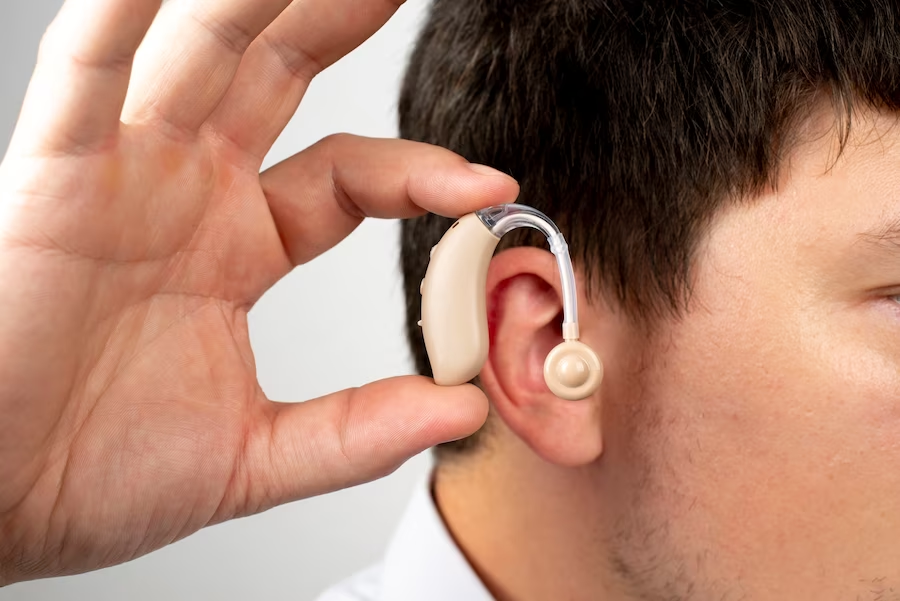The Hearing Aids Market has seen significant growth in recent years, with an increasing number of people seeking solutions for hearing loss. According to a report by IndustryARC, the global hearing aids market size was valued at $6.88 billion and is expected to grow at a CAGR of 7% from 2019 to 2025. In this blog, we'll take a closer look at the different types of hearing aids, their features, and the current trends in the market.
 |
Key Takeaways
- The behind-the-ear (BTE) products held the largest market share in terms of revenue with 30.13%
- Europe dominated the hearing aids market with a revenue market share of 51.91%.
- Asia Pacific is expected to grow at the forecast rate over the forecast period.
- Growing preference towards wireless technology and e-commerce are two key factors driving the hearing aids market.
Hearing Aids Market Drivers
- Growing preference towards wireless technology
The introduction of smart hearing aids and wireless technology is gaining popularity in the global hearing aid market. Key players operating in the market are coming up with wireless hearing aids, which are embedded with electromagnetic compatibility (telecoil), Bluetooth, and frequency modulation (FM) compatibility. Further, companies are introducing smart hearing aids which are also growing in popularity and provide effective treatment for any degree of hearing loss.
- The E-commerce
The rise of e-commerce especially in regions like Asia Pacific with a huge consumer base is a key factor driving the market growth. The Internet plays a major part in making a purchase decision. Getting information about hearing aids, particularly for young adults and millennials. Further, e-commerce had made hearing aids cost much lesser and easily available compared to the past when people had to gather information on the availably and functionality of the product matching to their needs. The emergence of e-commerce has made the process very easy with consumers able to search and purchase with the click of a button.
Types of Hearing Aids
There are several types of hearing aids available in the market, each with its own unique features and benefits. Here are some of the most common types of hearing aids:
- Behind-the-ear (BTE) hearing aids - These hearing aids sit behind the ear and are connected to a plastic earmold that fits inside the outer ear. BTE hearing aids are suitable for people of all ages and can be used for mild to severe hearing loss.
- In-the-ear (ITE) hearing aids - These hearing aids fit entirely inside the ear and are custom-made to fit the shape of the wearer's ear. ITE hearing aids are suitable for people with mild to severe hearing loss.
- Receiver-in-canal (RIC) hearing aids - RIC hearing aids are similar to BTE hearing aids but have a receiver that sits inside the ear canal instead of in the earmold. These hearing aids are suitable for people with mild to severe hearing loss.
- Completely-in-canal (CIC) hearing aids - These hearing aids fit entirely inside the ear canal and are barely visible. CIC hearing aids are suitable for people with mild to moderate hearing loss.
Features of Hearing Aids
Modern hearing aids come with a range of features that make them more convenient and effective than ever before. Here are some of the key features of hearing aids:
- Digital signal processing (DSP) - DSP technology allows hearing aids to filter out background noise and enhance speech sounds, making it easier for wearers to understand conversations.
- Bluetooth Connectivity - Many hearing aids now come with Bluetooth connectivity, allowing wearers to stream audio directly from their smartphones, TVs, and other devices.
- Rechargeable Batteries - Rechargeable hearing aids are becoming more popular as they eliminate the need for frequent battery replacements.
Trends in the Hearing Aids Market
The hearing aids market is constantly evolving, with new technologies and trends emerging all the time. Here are some of the current trends in the market:
- Online sales - With the COVID-19 pandemic, more people are turning to online shopping for their hearing aids. Online retailers are now offering a wider range of hearing aids and accessories, making it easier for people to find the right solution for their needs.
- Artificial intelligence (AI) - AI technology is being used to enhance the performance of hearing aids, allowing wearers to personalize their listening experience and adapt to different environments.
- 3D printing - 3D printing technology is being used to create custom-made hearing aids that fit the wearer's ear perfectly. This technology is also making it easier and faster to manufacture hearing aids.
Post a Comment